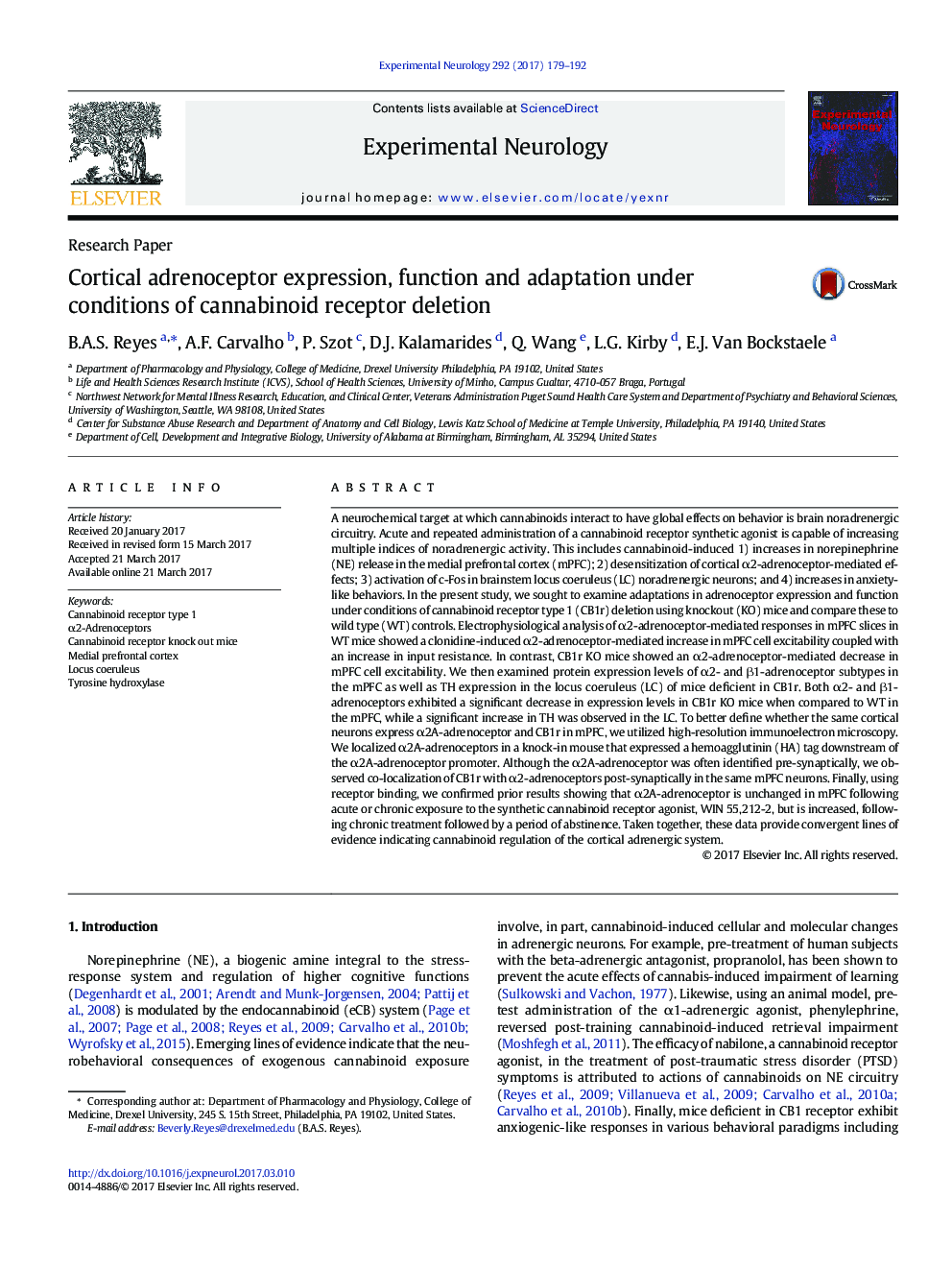| کد مقاله | کد نشریه | سال انتشار | مقاله انگلیسی | نسخه تمام متن |
|---|---|---|---|---|
| 5629160 | 1580147 | 2017 | 14 صفحه PDF | دانلود رایگان |
- CB1r KO mice showed an α2-adrenoceptor-mediated decrease in mPFC cell excitability.
- α2- and β1-adrenoceptor levels decreased in mPFC while TH increased in LC in CB1r KO mice.
- CB1r and α2-adrenoceptors are co-localized post-synaptically in the same mPFC neurons.
- α2A-adrenoceptor binding is unchanged in mPFC following acute or chronic WIN 55,212-2 but increased following withdrawal.
- These data provide convergent lines of evidence indicating cannabinoid regulation of the cortical adrenergic system.
A neurochemical target at which cannabinoids interact to have global effects on behavior is brain noradrenergic circuitry. Acute and repeated administration of a cannabinoid receptor synthetic agonist is capable of increasing multiple indices of noradrenergic activity. This includes cannabinoid-induced 1) increases in norepinephrine (NE) release in the medial prefrontal cortex (mPFC); 2) desensitization of cortical α2-adrenoceptor-mediated effects; 3) activation of c-Fos in brainstem locus coeruleus (LC) noradrenergic neurons; and 4) increases in anxiety-like behaviors. In the present study, we sought to examine adaptations in adrenoceptor expression and function under conditions of cannabinoid receptor type 1 (CB1r) deletion using knockout (KO) mice and compare these to wild type (WT) controls. Electrophysiological analysis of α2-adrenoceptor-mediated responses in mPFC slices in WT mice showed a clonidine-induced α2-adrenoceptor-mediated increase in mPFC cell excitability coupled with an increase in input resistance. In contrast, CB1r KO mice showed an α2-adrenoceptor-mediated decrease in mPFC cell excitability. We then examined protein expression levels of α2- and β1-adrenoceptor subtypes in the mPFC as well as TH expression in the locus coeruleus (LC) of mice deficient in CB1r. Both α2- and β1-adrenoceptors exhibited a significant decrease in expression levels in CB1r KO mice when compared to WT in the mPFC, while a significant increase in TH was observed in the LC. To better define whether the same cortical neurons express α2A-adrenoceptor and CB1r in mPFC, we utilized high-resolution immunoelectron microscopy. We localized α2A-adrenoceptors in a knock-in mouse that expressed a hemoagglutinin (HA) tag downstream of the α2A-adrenoceptor promoter. Although the α2A-adrenoceptor was often identified pre-synaptically, we observed co-localization of CB1r with α2-adrenoceptors post-synaptically in the same mPFC neurons. Finally, using receptor binding, we confirmed prior results showing that α2A-adrenoceptor is unchanged in mPFC following acute or chronic exposure to the synthetic cannabinoid receptor agonist, WIN 55,212-2, but is increased, following chronic treatment followed by a period of abstinence. Taken together, these data provide convergent lines of evidence indicating cannabinoid regulation of the cortical adrenergic system.
Journal: Experimental Neurology - Volume 292, June 2017, Pages 179-192
